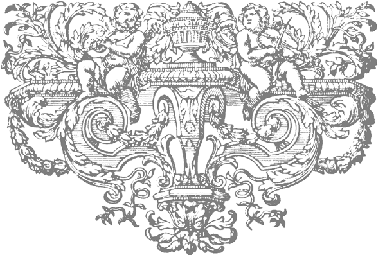A Franco-Flemish double-manual harpsichord,
![]()
The spine side and the top of the stand of the Franco-Flemish harpsichord

This photograph shows the stunning decoration on the spine side and also part of the stand underneath the Franco-Flemish harpsichord. The decoration on the spine is lacking any of the 'fine art' figure paintings attributed to François Boucher and found on much of the rest of the instrument. On the other hand, this is one of only two 18th-century French harpsichord with a decorated spine in the world!
This decoration, and the decorations surrounding the Boucher paintings on the rest of the instrument, have all been attributed to Francois Boucher, Paris, 1750. It is generally recognised that this attribution is unassailable!
The spine decoration, partly because of its simplicity, is perhaps the most elegant and refined decoration on the instrument. However, although very simple in concept and execution, it is an extremely important part of the decoration, and of the interpretation of the history of the instrument.
The decoration on the spine almost certainly arose because this was a Royal instrument, which was meant to stand ostentatiously in the centre of one of the rooms in the Palace of Versailles, and this clearly meant that it was NOT meant to be pushed ignominiously up against a side wall!
This is, indeed, only one of two eighteenth-century French harpsichord in the world with a decorated spine!
![]()

A detail of the spine-side decoration attributed here to Francois Boucher, Paris, 1750. Lance Whitehead has identified the origin of the central trophy, as well as the one other trophy, also found on the spine side of the Franco-Flemish harpsichord, from their appearance in the New Book of Different Trophies engraved by Gabriel Huquier (1695 - 1772) and copied from prints, already in circulation by their author Antoine Watteau (1684 - 1721). The Metropolitan Museum of Art in New York, have dated the volume where this trophy is found to c.1735, which aligns nicely with the dating of the rest of the decoration, and with the ravalement of the instrument by Blanchet in 1750.
![]()
